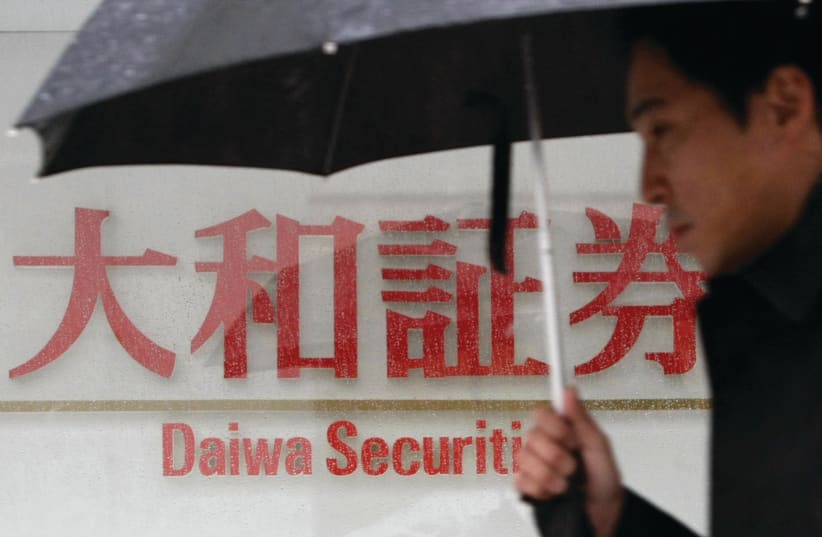The biggest risk is not taking any risk... In a world that is changing really quickly, the only strategy that is guaranteed to fail is not taking risks.
– Mark Zuckerberg
There has been a lot of political talk recently about the need to take risk. Caused by Covid, we have witnessed a year and a half of economic lockdowns, government becoming the de facto employer of choice by paying individuals out of work more than anyone could have ever dreamed of, to the point that there is no financial incentive for them to go back to work. Add to the list government mask mandates (I am not against wearing masks, and believe in the corona vaccine!) and there is no doubt that we have seen a recent surge in government power and control over our lives. Whether the power grab is justified or not, many fear that we have passed the point of no return and more and more government control is here to stay.
Speaking about the need for risk, well-known political pundit Ben Shapiro wrote, “A healthy civilization requires risk-taking. Innovators are risk-takers. Disincentivizing that risk destroys innovation. Working is risk-taking. Disincentivizing that risk destroys work. Building for the future is risk-taking. Disincentivizing that risk destroys responsibility. The fundamental good of liberty lies in the incentivization of risk.
As F.A. Hayek put it, “If there were omniscient men, if we could know not only all that affects the attainment of our present wishes but also our future wants and desires, there would be little case for liberty.”
But, Hayek points out, we are not omniscient; we do not know who will provide progress, or how. Progress requires risk; liberty ensures the ability to take risk. We thus have a choice before us between the false promise of individual enervation and endless paternalistic care-taking from centralized authority and the real and chaotic world of liberty and risk. Which option we choose will decide whether our civilization survives.”
When it comes to investing, risk plays a central role as well. When I ask potential investors what their investment objective is, they invariably answer, “To make money with no risk. Isn’t that everyone’s goal?” As long as markets move higher investors seem willing to take on more risk. But with growing worry over stock market valuations, supply chain shortages, surging inflation and impending interest-rate hikes, now may be a good time for investors to take a step back and think about their current portfolio risk level.
In the investing world, risk is usually defined as your ability to cope with market volatility. Eric Roberge of Business Insider explains, “If you’ve ever spoken with a financial adviser about investing money, then you’ve probably heard of “risk tolerance” or taken a risk-tolerance questionnaire. The higher your tolerance, conventional wisdom says, the more risk you can take with your investments. The lower your tolerance, the more conservative you may want to be with your portfolio. But your risk tolerance is only a measure of your emotional capacity to take risks. It tells us nothing about your actual ability to afford to realize them.”
The ability to afford risk is called “risk capacity”. This means that as you near your goal for your money, say retirement, you need to understand if you can actually afford to lose money. Not emotionally deal with the market ups and downs, but rather the very important fact that if you lose too much money you can’t eat!
In an interview about early retirement, Christine Benz, director of personal finance and retirement planning for Morningstar, really drives home the difference in risk terminology. She says, “But I would say one major thing to bear in mind is risk tolerance versus risk capacity. Know what the difference is and don’t confuse the two. So “risk capacity” means the amount of risk that you can take, given your proximity to needing to spend your money. If you’re getting close to retirement, if you’re in retirement, you’d want to have some safe assets in your portfolio to tide you through if the market environment is not great, especially in the early years of your retirement. A lot of people retiring today have pretty high risk tolerances, meaning that they feel OK with tolerating equity market volatility, tolerating volatility in their portfolios. And so they might say “Equity risk, bring it on. I have done this through my whole career, and I’m ready to keep holding lots of stocks.” But just make sure that you’re not confusing those two concepts. Risk capacity becomes even more important as you get close to drawdown mode. You do need to have some safe assets in your portfolio, even though the return potential is really low on cash and bonds today.”
Don’t get spoiled by recent stock market gains. Markets can go down. If you are approaching retirement or are already retired, take a long hard look at your portfolio and make sure that your risk capacity will allow you to weather an inevitable stock market storm.
The information contained in this article reflects the opinion of the author and not necessarily the opinion of Portfolio Resources Group, Inc. or its affiliates.
Aaron Katsman is author of the book Retirement GPS: How to Navigate Your Way to A Secure Financial Future with Global Investing (McGraw-Hill), and is a licensed financial professional both in the United States and Israel, and helps people who open investment accounts in the United States. Securities are offered through Portfolio Resources Group, Inc. (www.prginc.net). Member FINRA, SIPC, MSRB, FSI. For more information, call (02) 624-0995 visit www.aaronkatsman.com or email aaron@lighthousecapital.co.il

